At the beginning of this issue, I still want to repeat my three PPT principles. These three principles will be interspersed in all articles in this series.
1. 28 principles: The production of PPT only accounts for 20% of the proportion, 80% of which is in practice
2. Key principles: The sole purpose of PPT is to convey the key
3. An information principle: show only one kind of information to the audience at a time
It is recommended that you do not read the first period of value friends to look at the first period and then look at this issue.
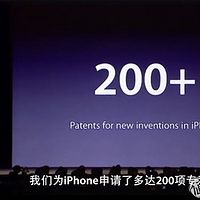 PPT Real School's dry goods sharing article 1: to understand these three principles, you do a big difference in the way PPT I am a PPT combat faction, I appreciate wrestling father inside the father, I believe that the actual out of real knowledge. On the last day of the previous job, search for "*.pptx" in your own documents and get 373 numbers. This is the total number of PPT I have done in the past five years, and these PPT 99% are made and described by me. Through hundreds of times in various occasions in both English and Chinese PPT presentations, I have constantly deepened myself on Pcxr83 | Like 1k Comments 472 Favorites 7k View Details
PPT Real School's dry goods sharing article 1: to understand these three principles, you do a big difference in the way PPT I am a PPT combat faction, I appreciate wrestling father inside the father, I believe that the actual out of real knowledge. On the last day of the previous job, search for "*.pptx" in your own documents and get 373 numbers. This is the total number of PPT I have done in the past five years, and these PPT 99% are made and described by me. Through hundreds of times in various occasions in both English and Chinese PPT presentations, I have constantly deepened myself on Pcxr83 | Like 1k Comments 472 Favorites 7k View Details In the first period I made an analogy. If you compare a speaker to a magician, PPT is just an egg prop in the hands of a magician. Everyone may remember the classic magic that Liu Qian and Dong Qing cooperated during the Spring Festival Gala. They used an eight-minute show to bring a fire directly to the industry. The same egg can also turn into similar magic in the hands of an ordinary magician, but it must not Like Liu Qian, there is absolute control over the stage and the audience's emotions are just right.
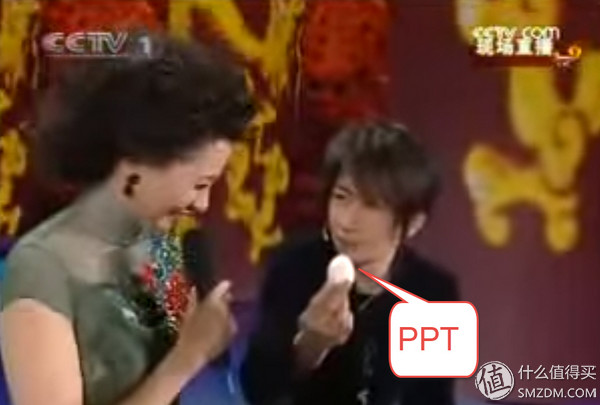
Similar to PPT and magic show, remembering the lines is just an ordinary magician who can make the audience look at you intently during the speech and remember you and you to express deeply after you finish the speech. The focus is a magician who makes people "witness miracles."
Through hundreds of PPT presentations, I probably summed up the following experience, I call it "PPT speaker self-cultivation."
Accomplishment 1: Learn and PPT "Robbery" First ask everyone a question. Please think with it and look down: When doing a PPT presentation, do you want the audience to watch you or watch PPT?When we look at some product launches, we may notice such a shot: A panoramic view of the PPT on a large screen, allowing you to see the contents of the PPT, and then quickly close-up to the speaker. The reason for this is that because the background screen is too large, people can easily pin their sights on the PPT screen and ignore the presence of small speakers.
You can look at the appearance of a speaker at the conference hall in the eyes of the audience through the image below, and it feels like we are sitting in the back row to watch football matches. In this case, because of the size advantages of PPT, it will dominate the audience, so the guide will try to make the audience's attention to focus on the protagonist - the speaker.
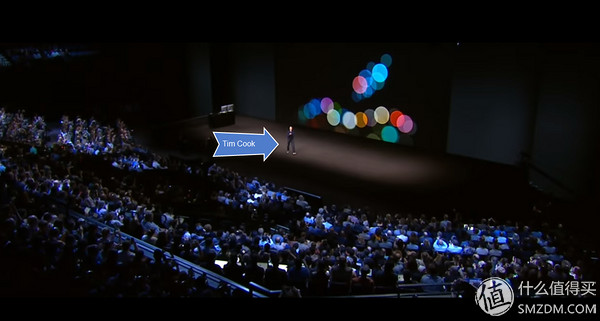
Take a look at the example below. The photographer first looks at the speaker by looking at it. He takes a good shot at the PPT and quickly switches to the character. Joey also intentionally walks a few steps to get the audience to notice him. Land and PPT "grab the show."
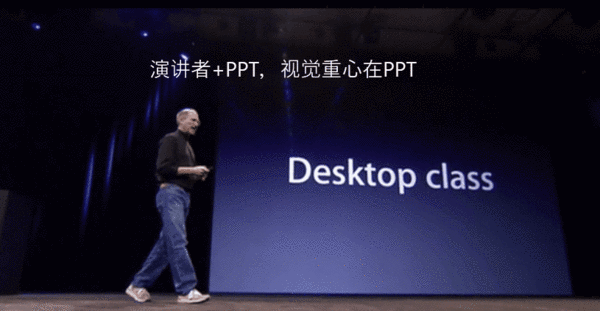
In real life, we generally do not speak on such a large occasion. The common speech environment is the 100-inch (or larger) screen of the conference room. Although the screen is still larger than the speaker at this time, but the proportion is not so exaggerated, from this perspective, the speaker in the PPT presentation on a smaller occasion is relatively cheap, but there is no guarantee that the audience will certainly pay attention to the speaker .
The most ideal state is that the audience takes a look at the keywords on the PPT and then begins to focus on the speaker's elaboration of the keywords. Want to achieve the same effect as this TV broadcaster, simple two strokes can be done.
Clever use of black screen keys to seamlessly switch "lens"Here we are going to introduce a mysterious button: the black screen on the PPT demonstrator. This button exists on almost all PPT demonstrators, but many people may never have tried it.

Its practical method is very simple: first briefly introduce the points to be talked about (the audience's attention is on the PPT), and then press the black screen to let the audience's attention naturally shift to you. (I believe that few people think about the dark screen ) This is a quick screen (letting the audience turn their attention back to the PPT to review the main points), finish the point and go to the next one.

Note: Not every PPT must use a black screen key! Just apply this technique to the audience to keep up with your rhythm if you want to make the explanation for a long time (provisionally defined as 30 seconds or more). If it is a chapter that can be finished quickly, using a black screen key will break the continuity of the speech. Remember!
Another kind of situation that is not recommended to use the black screen key is the demonstration under the large screen. Because the screen is too large, suddenly the audience may feel a sudden sense of darkness, and even suspect that the screen is broken.
Use body movements to enlarge yourselfAnother way to highlight yourself is to do some body movements during the show to attract the attention of the audience, such as hand pointing to the contents of the PPT, and then say "please look at this chart." At this time, you and the PPT will synthesize a Overall, the audience’s impression is that the speaker is guiding me to PPT instead of “I'm watching PPT (it doesn't matter to the speaker)â€

In situations where the speech environment is not large (conference rooms, small classrooms, etc.), it is possible to move toward the audience to achieve "magnifying" their own effect while elaborating, and at the same time, to bring the physical and psychological distance closer to the audience. In fact, when we were at school, many teachers often used this method, speaking and walking down the podium to the students (and then silently confiscate my comic book).
When walking, be careful not to walk in front of the projector, otherwise it will be bright by the projector and blink, and will also make a “projection tattoo†on the body, giving people a poor perception.
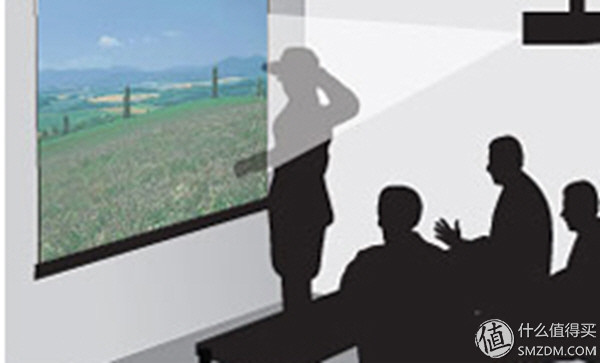
People's eyes are naturally interested in dynamic things. To get more attention, don't do stand-up speakers and move them appropriately (note that it is appropriate). I strongly recommend that all body movements should be exercised in the mirror first. Don't go to the stage and move like a monkey. The following Apple executive's buddy I was dizzy each time I talk about PPT. The following motion picture is I put him 40 The speech for a second or so took a quick glance. You can understand what I mean by looking at this negative material.

Summary: When we do PPT presentations we must always remember that we are the protagonist, PPT is just a multimedia means, do not let the audience has been staring at the PPT to grab our limelight, in the demonstration there is no blessing of TV broadcast technology We can use the above simple tricks to guide the audience's attention.
Accomplishment 2: Reasonable use of various elements in PPT allows viewers to “second understandâ€Why do we emphasize in the three principles that only one message is presented to the audience at a time? The purpose is to not allow them to be overwhelmed by too much information, to read quickly, and then to turn their attention to the speaker. To put it plainly, just do not want to Let PPT "grab the show."
Experienced PPT speakers will skillfully arrange words, animations, pictures and other elements in the production of PPT so that the audience can understand what they want to express. Now I will briefly analyze the commonly used PPT five elements. : Use of text, animation, pictures, icons, charts.
Do not underestimate the power of writingLet's do a simple little test: Please quickly tell the color of these words from left to right
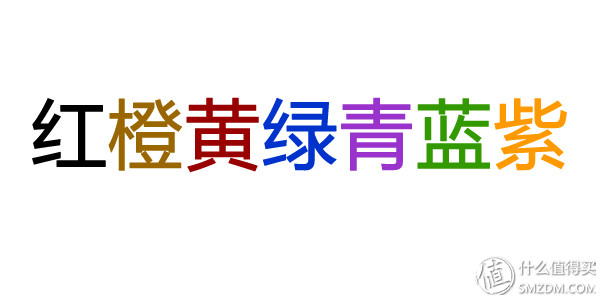
I guess a lot of friends feel the tongue tied when they do this test. Recognition of most of these seven words takes less than a second, and identifying these colors may take four or five seconds or more. This shows that words are already very powerful in our consciousness, even It's a lot more intense than a very intuitive color.
To understand this point, we shouldn’t be afraid of using plain text PPT chapters. We often say “a picture is worth a thousand wordsâ€, but according to the PPT’s “emphasis†principle, we don’t need the audience to remember a thousand words. What needs to be remembered by the audience is only the emphasis. The exact meaning of the text is that all other elements cannot be replaced.
For example, the following PPT is difficult to accurately express in pictures. When we display the key information, we must adopt the accurate expression of words to avoid ambiguity.
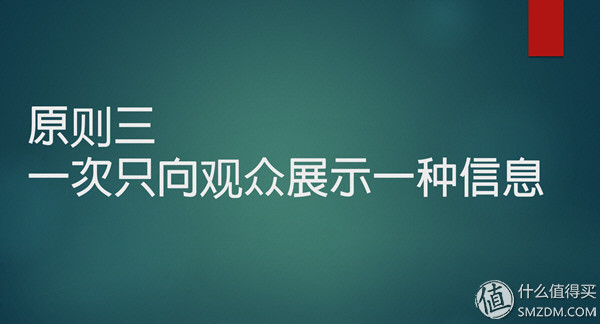
Of course, the length of the text must be taken care of. If you do the following, the audience can only see a lot of tips. The display text should be visible in the last row of viewers and can be read in three seconds (preferably in seconds). should.

Summarized in one sentence: The key information must be expressed in words. The text PPT must be read in three seconds.
I don't know how to animate with an "appear" animationAnimation is a relatively big topic. We will open a chapter in the future. This time we will talk about a very simple principle: If you are not sure about the use of animation, then only use the "appearance" animation.
I remember when I was in high school in 2001, I participated in a PPT competition in the city. At that time, the PPT was a full-screen animation. I could not wait to put all the animation effects on it. The result was appreciated by the judges' teachers and it was the first in the city. Name, now can not help but feel funny. What's even more funny is that it's 2017 now. We can still see that many people like to stack animations meaninglessly on PPT. I think this is cool, like the following:
 Animated PPT
Animated PPT
In the actual demonstration, the stacking of this animation is a waste of time, and it will take the audience's attention. If it is used too much, it will cause serious visual fatigue.
Many people ignore one of the most bovine animations when stacking animation effects. Here, I would like to introduce you to the king of animation: An animation appears (Appear in English)! In all versions of PowerPoint, the animation was placed first, and the software maker has actually told you very clearly that this is the simplest and most useful thing, so put it first!
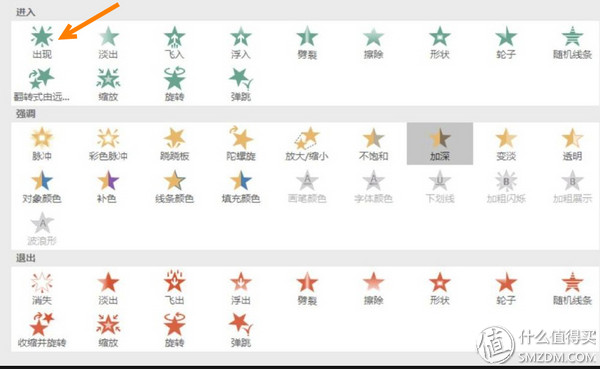
The use of animation can achieve the most concise and natural over-excess, so as to grasp the order of information appearing, and does not allow the audience to have any distractions, and perfectly implement "one message at a time."

This is not to say that other animations are useless, but it is challenging to use them well. If you are not sure how to use them, use “appear†animations when there is more information on one page (only one sentence per page) Or there is no need to use animation in a picture.)
In many cases, the simplest and most basic things are often best used.
Use pictures only to enhance intuitive feelings The picture is a very important means of multimedia presentation. Sometimes it means that a lot of words do not express clearly. One picture will be settled, but the picture also has some side effects:
Pictures can easily lead to additional associations. In theory, an image is rich with infinite information. The viewer is likely to think of his own thing with the picture. For example, if you want to display a mobile phone, the quality of the picture is good. Put a high-definition swimsuit beauty, the audience is likely to look at the beauty of wanting and forget it is to show the phone's camera effect is good or even forget your speech.
Different people will have different understanding of the same picture. For example, the following picture assumes that your focus is on the kind of desolation and openness in the desert, but many viewers may have their eyes on the BMW. You cannot control the thoughts of the audience, nor do you know how the audience understands it. This will lead to inaccurate expressions. Inaccurate expressions are arrogant: Ineffective expression.

We should avoid such side effects as much as possible when displaying pictures. In simple terms, if it is non-critical information and the picture can enhance the viewer's intuitive perception, it can be expressed in pictures.
For example, we have to say that the company’s employees have a high degree of satisfaction. It can be said that the questionnaire survey employee’s satisfaction is 99%, and older employees more than 10 years account for 50% of the data, but the audience did not form an intuitive feeling. Putting a photo of a family portrait, the employees above all showed a satisfied smile and saved us a lot of time. The audience can also feel empathy from the employees' smiles.

Still have to remind: The key information must use the text to form the accurate expression. It's best to use a bit of text in your photos.
Applying some icons to the design of the PPT usually makes the entire page more design-friendly and looks cleaner, especially with the now-flattering flat icons that make the PPT look modern.
Personally, I also like to add some icons in PPT, but there are a few points to note that I must share: The attributes of icons and pictures are somewhat similar, that is, there is ambiguity. When people see icons, they often have to convert into the mind. Text information can be understood.
For example, the commentary is “My company provides customers with low-cost, high-efficiency, creative advertising copyâ€, PPT uses the following three icons, the audience at first glance is certainly aggressive. Because these three icons require a certain amount of thinking costs, it is difficult to accurately understand texts that do not match.

The ideal way of expression is to add text notes and then present them in turn so that the audience can understand them. For such icons with certain ambiguities, putting in the PPT merely adds a little sense of design and does not have much practical use.
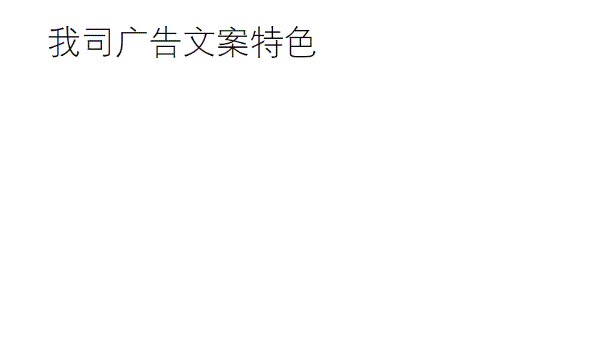
When using icons, it is best to use some icons that have a common social consensus to increase the audience's understanding speed. (The most socially-consensual icon is probably the symbol of toilets for men and women.)
For example, the following PPT introduces a company's footwear products, adding some of the shoes icon will speed up the audience's reading speed, while producing a full range of visual effects, so as to give the entire show a plus.
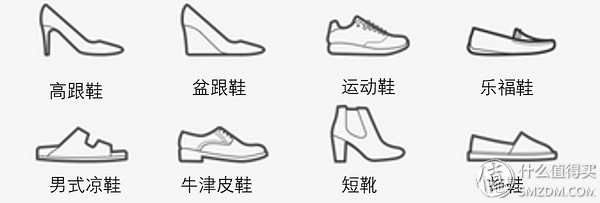
In a nutshell, the use of icons is meant to speed up the audience's understanding rather than let them think about icons around the circle. We should only think about the icon with a cost of zero.
Incidentally, here is the website of Mr Icon, which I use to find icons.
There are many free and authorized icons for download on this site. The PNG format is transparent, but the speed of access to the country is a bit slow.
Another way is to search for keywords on the google image and add the word ICON. For example, if you want to find a comet icon, search for “cat iconâ€.
Use the chart only to emphasize the core dataIf you imagine that a tall PPT, I guess the brain comes out of a variety of styles, a variety of color charts, similar to the following figure. However, if you look closely at this case, you will find that your eyes do not know where to look, because the full screen is a chart, which is very embarrassing.
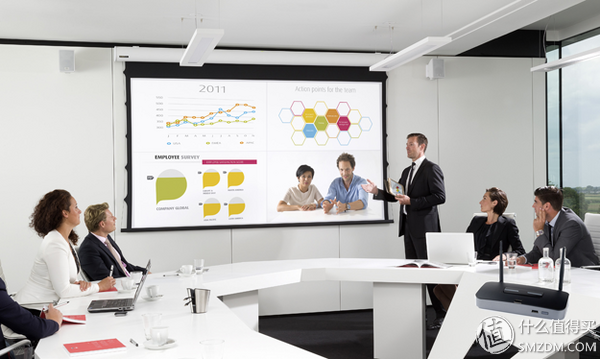
When presenting a chart, you should also follow the "one message" principle, showing up to one chart at a time.
However, a chart at a time sometimes does not best convey our meaning. For example, the following year's turnover icon aims to highlight that our company's turnover in 2016 is the highest in the industry, and that the competition is 25 or 43. Well, it's irrelevant, as long as it's lower than ours.
One problem with this chart is that our company’s 70 is losing more than the 56 on the side, which shows no industry boss’s arrogance.
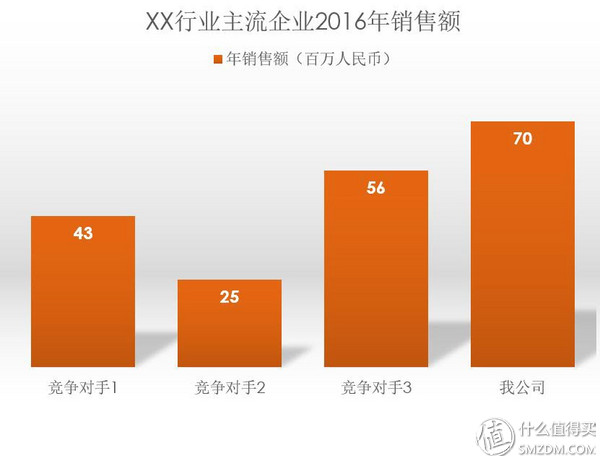
At this time, we may wish to make a simple adjustment to replace the columns of other competitors with grey ones, only to leave my company in color, and put the lowest value of 25 on the side to compare the appearance of our pillars. This chart shows The audience naturally looked at the highest pillar of color.

The above is just a small example, not necessarily every chart to do this method, as long as your display method can highlight the core of the data.
The proper use of the above five elements of the PPT is an important step toward the master of PPT. The word “just right†requires a lot of practice and thinking to achieve.
Let’s take a look at your PPT:
Is it consistent with the principle of displaying information one at a time?
Will the information displayed be ambiguous? (You can find a few friends and colleagues to help and see how they understand it)
Can the audience read and understand the information within 3 seconds?
Is there a better way to show the audience “second understand�
Training 3 Practise PPT with 80% of the timeMaking PPT with 20% of time Practicing speech with 80% of the time is the first of the three principles of PPT, and it is also the most basic accomplishment of a PPT speaker. It is also the most difficult one to do.
Simulate the real environmentThe essence of practicing PPT is to simulate a real speech. I see that many people like to practise PPT in front of a computer with silent or whispered manuscripts, which obviously cannot achieve the effect of simulation.
If conditions permit, it is best to open the projector in the company's conference room to practice. The speed, tone, and volume of the exercise must be the same as those at the time of the lecture, and record the practice phone. Only when I look back at the video can I find my own problems. I once thought that my PPT was very good, and I didn't know until one time I had seen the video of my speech. I realized that there is a big difference between reality and my imagination. I need to improve it. too much.

At the same time, our recorded images also played the effect of a timer. During practice, we must pay attention to the time of the entire speech. In more formal situations, speaking time will be given to the speech. If the time of the speech exceeds the time, the entire speech will be delayed. The progress of the event.
By the way, a simple self-timer on a mobile phone with a tripod can be easily recorded. I use Huawei's self-timer for my glory. The self-timer button can be used as a separate remote control for easy operation.
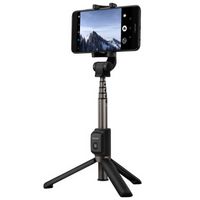 Huawei (HUAWEI) Honor Bluetooth Tripod Self-timer Wireless Edition 360 Degree Rotary Mobile Phone Universal Broadcasting Private (Black) 119元京东to buy
Huawei (HUAWEI) Honor Bluetooth Tripod Self-timer Wireless Edition 360 Degree Rotary Mobile Phone Universal Broadcasting Private (Black) 119元京东to buy If it is inconvenient for the company to practice, it is also good to practice in home TV. Now that the size of home TV is not small, many families also have projectors, which can do a very good simulation. If you often need to do PPT presentations and you need to practice at home, it's best to buy a PPT demonstrator yourself at home instead of using a mouse instead. Here I recommend a Kensington demonstrator that I have used for several years. It's cheap and it's very good to hold.
 Kensington K33374 ppt page pen remote projection pen laser demonstrator red light 198 yuan Jingdong to buy
Kensington K33374 ppt page pen remote projection pen laser demonstrator red light 198 yuan Jingdong to buy Even if we are no matter how carefully we prepare, when we come to a real speech, forgetting words is inevitable. After all, a PPT is just a few thousand words. In the last issue, I mentioned that if it is easy to forget words, or that the experience on the spot is not rich enough, it is better to avoid demonstrating in an unobstructed situation. It is better to give yourself a speech table and put the computer into the presenter mode.
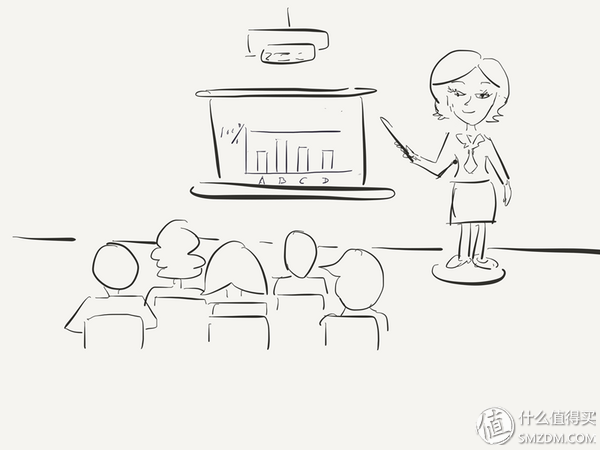
Even if there is a presenter mode, you can watch the remarks and don’t stare at the eyes. Looking at the whole person will involuntarily lean forward, creating an embarrassing posture. The most taboo is in the key part (the core part of PPT) to forget the word to see the prompt, it is like singing and singing into the part of the chorus suddenly get stuck, that will make the audience's emotions will plummet. In practice, we need to practice a few of the most critical PPTs repeatedly, so we must not forget them.
Below I found an example of Tim Cook. Let's take a look at this feeling: At the beginning, with wide-open eyes and full of emotional expressions, suddenly you get stuck to see the teleprompter, and then you may not be able to see because of the bad eyes. The body leans forward very sharply. It is really a scene like this. The speeches of Daxie are generally made by professionals who help to practice and instruct them. It is still inevitable that such situations will occur. As ordinary people, we must be more careful. This step of videotaping ourselves with mobile phones is even more important.
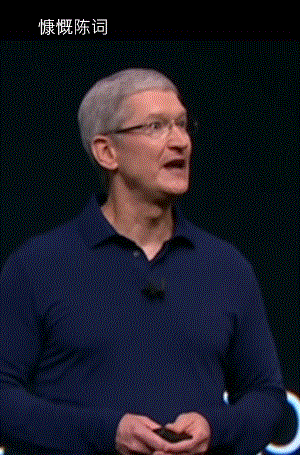
Good PPT speakers are not born, they are all trained, and many practitioners may not be able to speak well. Less practice will certainly not speak well. Speaking of stuttering, often forgetting words, and not saying anything in advance, but also expect the audience to believe what the speaker said?
Summary of this issue The purpose of the PPT speech is to convey the focus to the audience. The qualified PPT speaker will enable the audience to fully understand the content of the PPT content and to understand the message it wishes to pass through the ingenious arrangement of the PPT content and the attention of the audience.
However, this is not enough. The audience has followed and understood. It does not mean that they will believe and accept it.
The truly outstanding speaker is to establish trust with the audience in a short period of time. When the audience feels that the person who made the speech is reliable, even if it is a black-and-white, large-character PPT, it is sufficient to be effective and convincing.
In the many PPT shows I've ever done, whether it's a few people or a few hundred people, I dare not neglect things, and I'm always on my own. I dare not waste the valuable time of any audience. In order to give them time, I must double time to practice PPT. The audience's smile, understanding, applause and trust are the best rewards for a PPT speaker.
My PPT speech has left a lot of photos. My favorite one is not the high-spirited me on the stage, but the audience who listens to my speech.

In the end, the self-cultivation of a PPT speaker is nothing more than five words: There is an audience in mind.
Reference exercises in this periodFriends who are interested in raising the level of PPT can do the following exercises and welcome to communicate with me in the message area.
Use a black screen key in your next speech and write down why you want to use it.
In the next PPT presentation, try to join the body movements and approach the audience.
Examine the latest PPT to see if the text, pictures, charts, and other elements are used properly.
Record your own PPT practice and invite your friends to watch and find out where you need to improve.
Next notice The training PPT is often contacted in our work and study. His practice and presentation PPT are quite different. Demonstration PPT usually only needs the audience to remember a key point or produce an impression, such as: XX company is a good partner, XX products are worth buying, XX business plan worth investing and so on. For training PPTs, there are multiple points of knowledge that require the audience to understand memory.
In the next installment, I will introduce my own training experience in PPT for nearly ten years.

